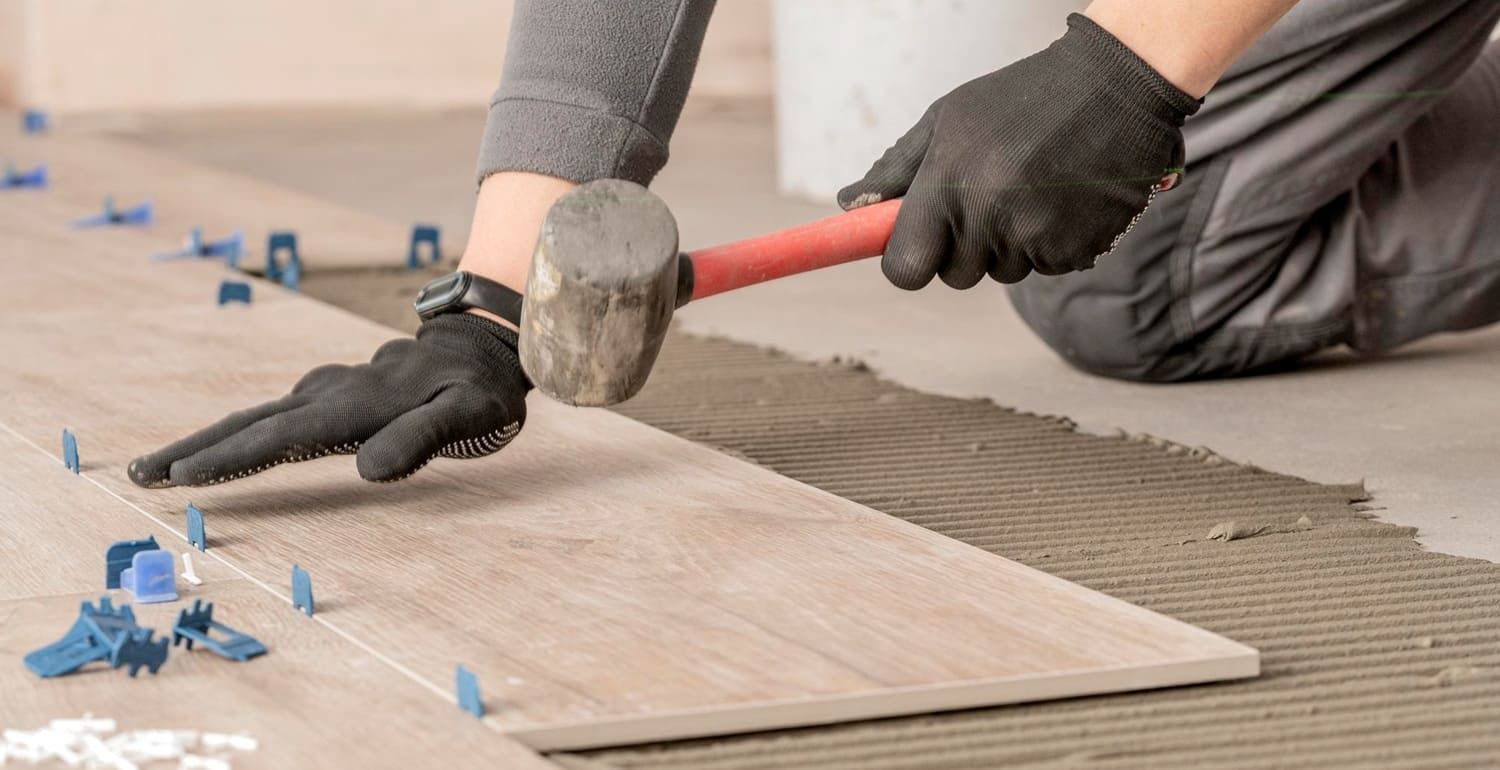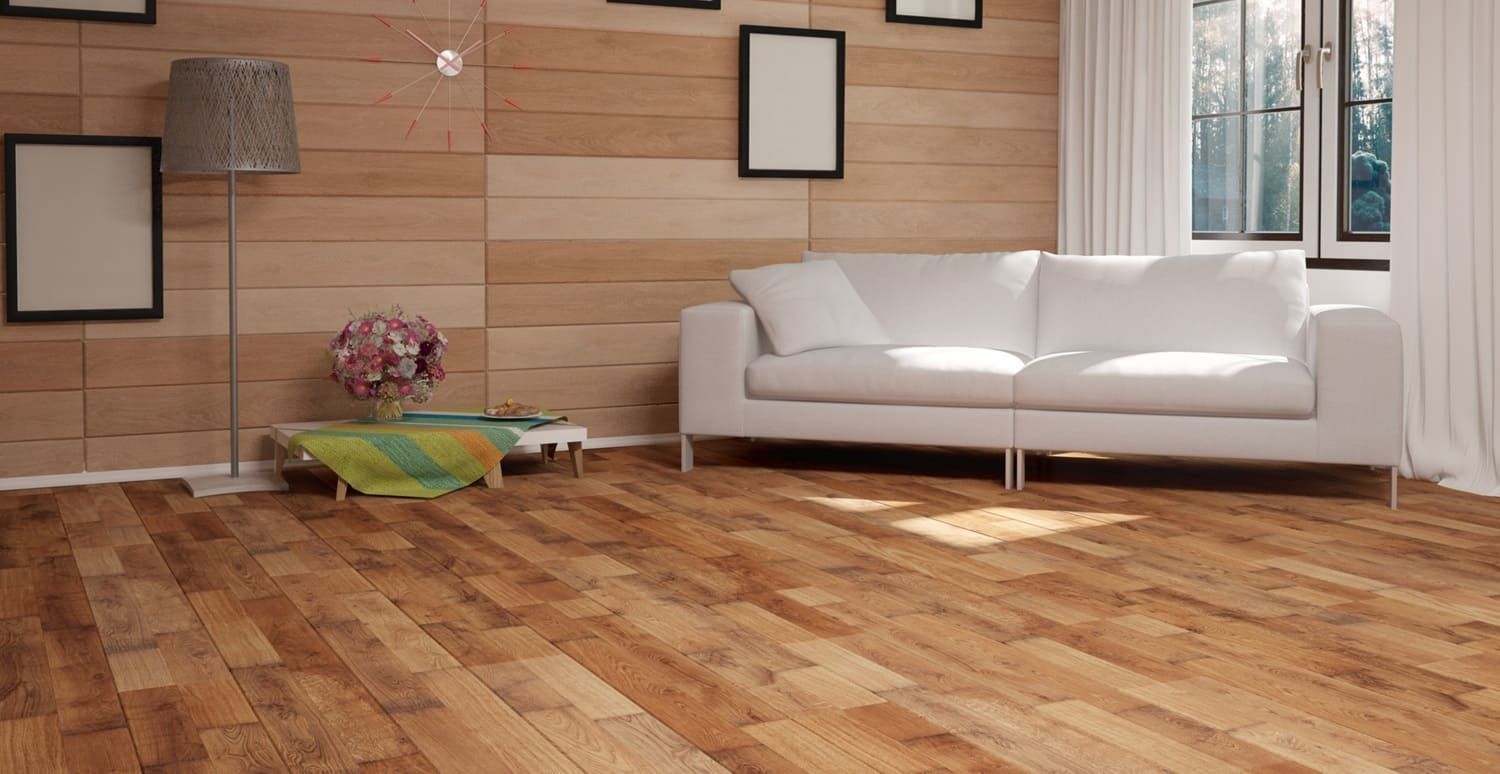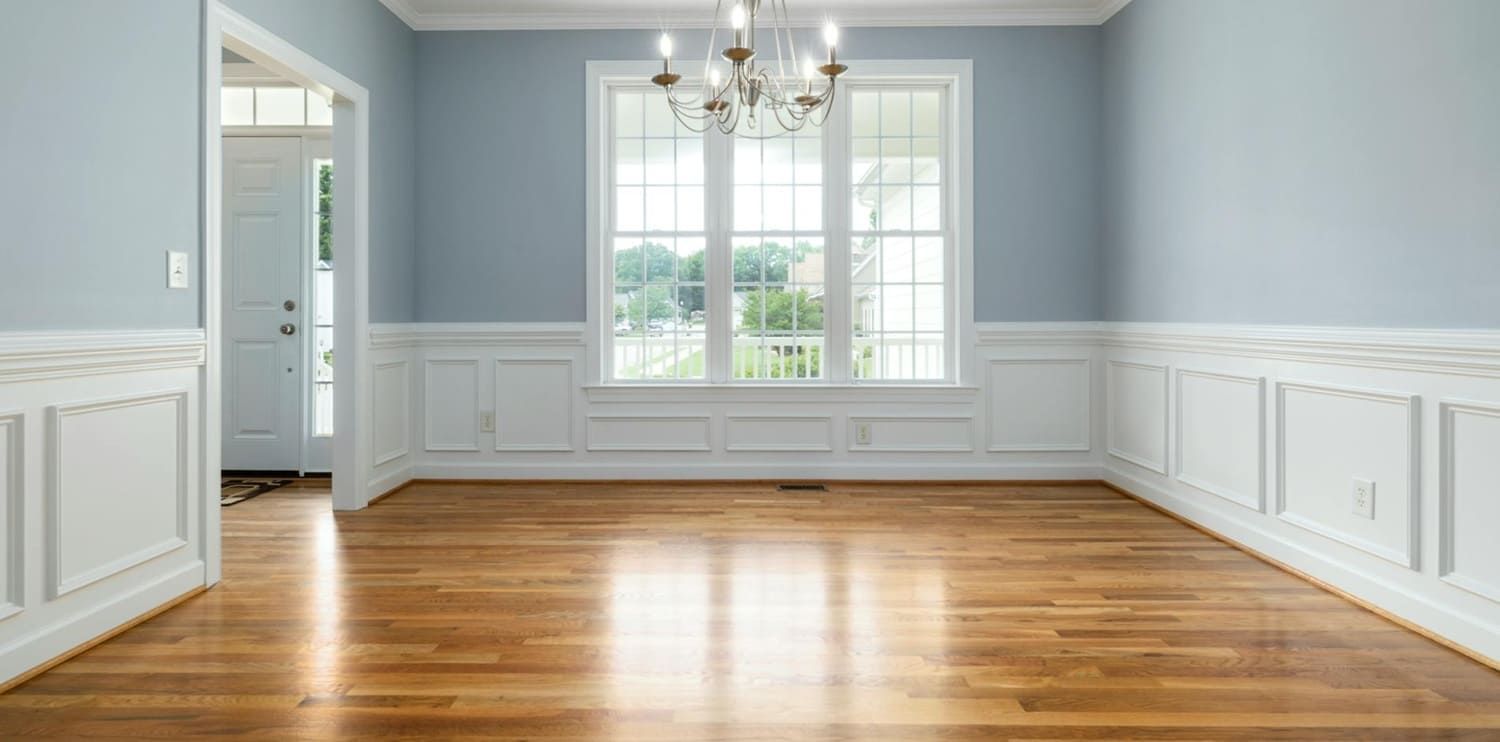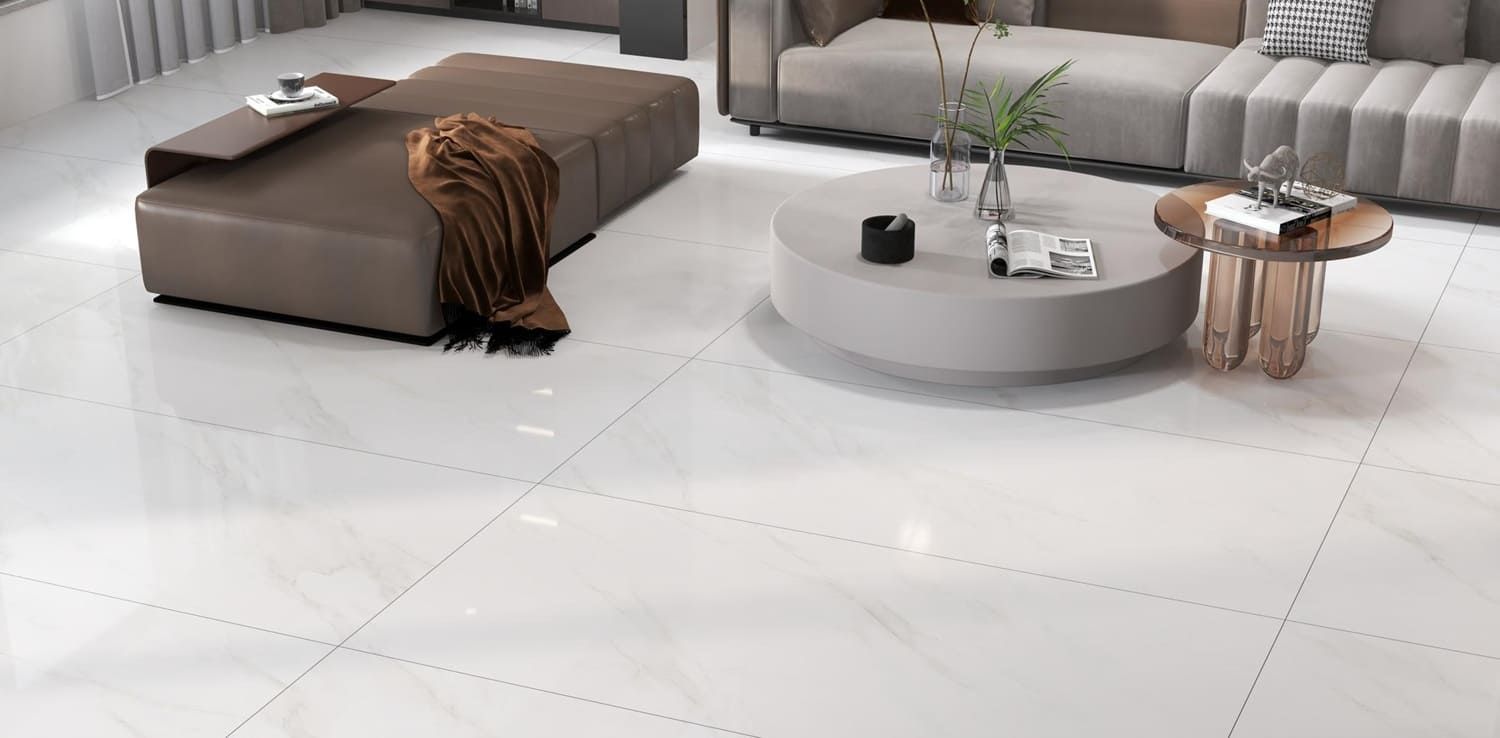5 Common Flooring Installation Mistakes and How to Avoid Them
Flooring installation is a transformative process that not only enhances the aesthetic appeal of a space but also its functionality. It's a task that demands precision, planning, and a keen eye for detail. Whether you're a DIY enthusiast taking on the challenge yourself or entrusting the job to a professional, steering clear of common pitfalls is crucial. Making mistakes during installation can lead to costly repairs and a less-than-satisfactory result. In this expanded guide, we'll delve deeper into five prevalent flooring installation mistakes and offer comprehensive strategies to help you avoid them.

1. Inadequate Subfloor Preparation
One of the foundational steps in flooring installation is ensuring that the subfloor is properly prepared. The subfloor acts as the bedrock for your new flooring, and any oversight here can lead to significant issues down the line. It's not just about laying a surface; it's about creating a stable, even foundation that will support your flooring for years to come.
What Happens If You Skip This Step?
Neglecting proper subfloor preparation can have serious repercussions. An uneven subfloor can result in a range of problems including creaks, squeaks, and in severe cases, visible damage to the flooring itself. Over time, these imperfections can manifest as gaps between planks, buckling, or other structural problems that not only affect the look of your flooring but can also compromise its integrity.
Furthermore, a subfloor that hasn't been adequately prepared can affect the longevity of your flooring. Moisture trapped under the flooring due to a poorly prepared subfloor can lead to mold growth, which is not only unsightly but can also pose health risks.
How to Avoid This Mistake
- Inspect and Repair: Begin by thoroughly inspecting your subfloor for any signs of damage such as holes, cracks, or moisture issues. It's crucial to address these problems before proceeding with the installation. Repairing these issues might involve patching holes, smoothing out uneven areas, or even replacing sections of the subfloor if necessary.
- Clean Thoroughly: Once repairs are made, ensure that the subfloor is clean and free of debris. Dust, dirt, and other particles can interfere with the adhesive or underlayment, leading to installation issues. A clean surface ensures that your flooring adheres properly and lays flat.
- Use the Right Underlayment: The choice of underlayment is crucial and should be based on your specific flooring type. The right underlayment can help with soundproofing, moisture resistance, and evening out minor imperfections in the subfloor. For instance, cork underlayment might be ideal for soundproofing, while a vapor barrier underlayment is essential for areas prone to moisture.
2. Ignoring Acclimation Time
Acclimation is a step that many overlook, yet it plays a pivotal role in ensuring that your flooring material adjusts to the room's environmental conditions. This step is especially important for natural materials like hardwood, which are sensitive to changes in temperature and humidity.
Why Acclimation Matters
Flooring materials expand and contract in response to environmental changes. If you skip the acclimation process, you may find that your flooring develops gaps or warps after installation. This can lead to an uneven surface and can significantly reduce the lifespan of your flooring.
Moreover, failing to acclimate can lead to unexpected shifts in the flooring material, causing it to pull away from the subfloor or other pieces, leading to further damage and potential safety hazards.
How to Do It Right
- Follow Manufacturer Guidelines: Each flooring product comes with specific acclimation guidelines provided by the manufacturer. These guidelines are based on extensive testing and are designed to ensure the best results. Adhering to these recommendations will help you avoid unnecessary issues down the road.
- Control the Environment: It's essential to maintain the room at the recommended temperature and humidity levels not just during acclimation, but also during and after installation. Use a hygrometer to monitor humidity levels and ensure that the space is well-ventilated.
- Plan Ahead: Incorporate acclimation time into your project schedule. This requires patience and planning, but it's a critical step. Rushing through this process might save you time initially, but can lead to significant problems later.
3. Incorrect Measurements
Accuracy is the cornerstone of a successful flooring installation, and this begins with precise measurements. Any errors in this phase can lead to significant waste, increased costs, and a subpar finish that doesn't meet your expectations.
The Consequences of Poor Measurements
Inaccurate measurements can lead to a host of issues. Purchasing too little material might delay the project as you wait for additional supplies, while buying too much leads to unnecessary expense. Furthermore, incorrect cuts can create gaps, uneven edges, or necessitate costly do-overs.
Moreover, poor measurements can disrupt the pattern or flow of the flooring, particularly with materials like tiles or patterned vinyl, leading to an unsightly finish.
Tips for Precise Measurements
- Double-Check Everything: Always measure the space multiple times to ensure accuracy. It's better to measure twice and cut once, as the old adage goes. Double-checking helps prevent errors and ensures that you have enough material to cover the entire area.
- Account for Waste: Always purchase slightly more material than your initial measurements suggest. This accounts for mistakes, future repairs, and cuts that might be necessary to fit awkward spaces.
- Consider Room Features: Take into account doorways, alcoves, and other architectural features when measuring. These features can affect how much material you need and how it should be cut. Accurate measurements ensure that the flooring fits seamlessly and looks professional.

4. Choosing the Wrong Flooring for the Space
Selecting the appropriate type of flooring for each specific area is critical. Each room has its own set of needs based on its use, moisture levels, and foot traffic. Choosing the wrong type can lead to premature wear and tear, extensive maintenance, or even damage.
Potential Pitfalls of the Wrong Choice
Using the wrong flooring can result in several issues. For example, installing hardwood in a bathroom can lead to warping due to moisture, while carpet in a high-traffic area might wear down quickly and require frequent replacements.
Additionally, certain materials may not match the aesthetic or functional needs of the space, leading to a mismatch that detracts from the room's overall appeal.
How to Make the Right Choice
- Assess the Space: Consider factors such as moisture, sunlight exposure, and foot traffic when selecting flooring. For example, choose moisture-resistant options like tile or vinyl for bathrooms and basements, and durable materials like laminate or engineered wood for high-traffic areas.
- Consult with Experts: If you're uncertain about which type of flooring to choose, consult with professionals. A flooring installation service can provide valuable insights and recommendations based on local conditions and your specific needs.
- Think Long-Term: It's important to select flooring that not only meets your current aesthetic preferences but will also stand up to your future needs and trends. Durable and versatile options can save you money and hassle in the long run.
5. Poor Adhesive Application
The adhesive is a crucial component in the flooring installation process, and incorrect application can lead to significant problems. Proper adhesive application ensures that your flooring remains securely in place and maintains its appearance over time.
Risks of Improper Adhesive Use
Improper adhesive application can cause the flooring to lift, shift, or develop unsightly bubbles, detracting from its appearance and functionality. In severe cases, it can lead to tripping hazards or require costly repairs and reinstallation.
Moreover, using the wrong adhesive type can weaken the bond between the flooring and subfloor, compromising the integrity of the installation.
Best Practices for Adhesive Application
- Choose the Right Adhesive: Different flooring materials require specific adhesives. Make sure to use the correct type for your flooring to ensure a strong bond and long-lasting results.
- Follow Instructions: Pay close attention to the manufacturer's instructions regarding adhesive application, including coverage area and drying times. Proper adherence to these guidelines is essential for a successful installation.
- Apply Evenly: Use appropriate tools to apply the adhesive evenly across the surface, ensuring full coverage without excess. This helps prevent issues such as lifting or bubbling and ensures a smooth, professional finish.
Conclusion
Avoiding common flooring installation mistakes requires attention to detail, patience, and a commitment to best practices. Whether you're tackling the project yourself or hiring a professional, understanding these pitfalls and how to avoid them ensures a smooth and successful installation.
At Eagle Flooring West, we are the best flooring installation company serving homes & businesses in Phoenix, Scottsdale, Glendale, Peoria, Paradise Valley, Chandler, Mesa, Tempe, Gilbert, Surprise, Avondale, Buckeye, Goodyear, Tolleson, Cave Creek, Anthem, Fountain Hills, and surrounding Phoenix Arizona areas. Our expert team ensures that your flooring is installed with precision and care, delivering long-lasting beauty and durability.
When in doubt, seeking the expertise of a professional flooring installation service can provide peace of mind and professional results. With the right approach, your new flooring will not only enhance the beauty of your space but also stand the test of time, providing years of enjoyment and functionality.
Get a free estimate today! Contact Eagle Flooring West for top-tier flooring installation services tailored to your needs.






